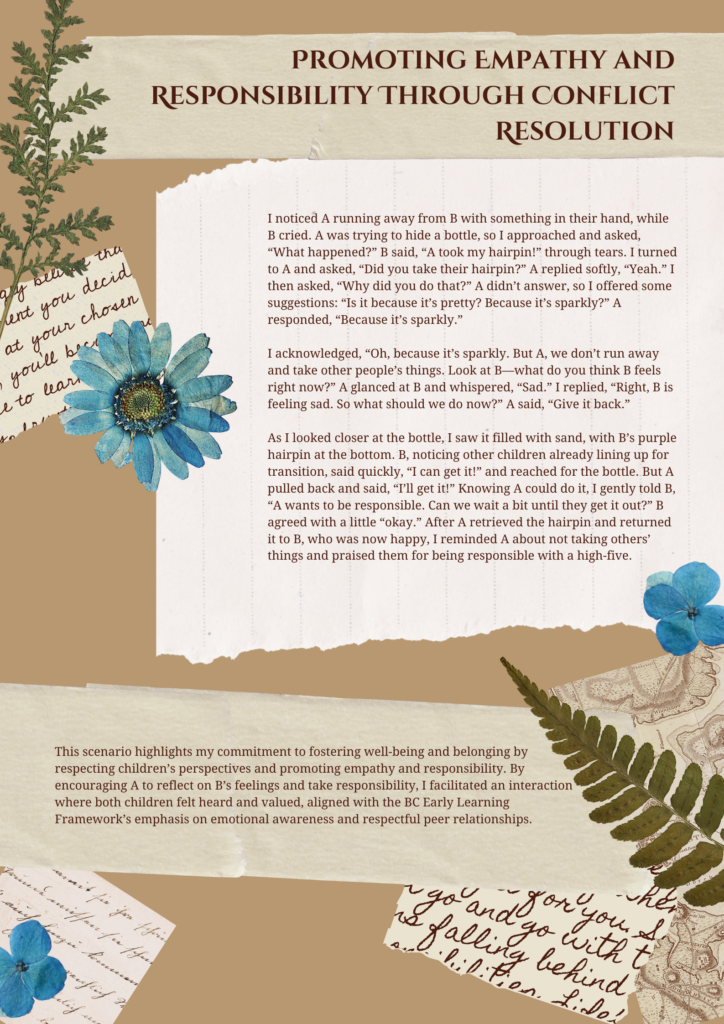Fall 2024
Flower of Kindness

During my practicum at Bumble and Bean, I introduced the “Flower of Kindness” activity to encourage children to think about how their actions can positively impact others. This visual and interactive approach helped make the concept of kindness more tangible and accessible for the children. The central question, “How can we be kind to others?”, became a starting point for meaningful discussions about empathy and respect.
As each child contributed their ideas, we created a flower with petals representing their thoughts. Ruby shared, “Share stuffy with Bailey,” showing her understanding of sharing personal belongings as a kind gesture. Emmett suggested, “Play with them,” emphasizing inclusion and friendship. Caleb contributed by saying, “Not hurt people,” reflecting on kindness as a way of maintaining safety and respect. These statements illustrated how children internalize kindness through both simple and profound actions, whether by offering a toy or showing self-control during play.
I observed that using the word “kind” instead of “care” made the concept easier for the children to grasp and apply. For example, when a conflict arose over sharing toys, I referred back to the Flower of Kindness, asking, “What did we say about being kind?” This reminder empowered the children to resolve the situation themselves by recalling their own contributions to the activity. It not only encouraged self-regulation but also reinforced the importance of their voices in shaping our classroom environment.
Reflecting on this experience, I recognize that my role as an educator is not just to teach kindness but to model and facilitate it through real-life situations. The children’s responses to the Flower of Kindness remind me to listen closely and respect their perspectives, which helps me adapt my approach to their developmental needs. This activity also prompts me to continually ask myself: “How am I supporting children in understanding and practicing kindness in everyday interactions?”
Through collaboration with my colleagues, I’ve also gained valuable insights into how shared activities like this can be extended across different contexts, creating a cohesive and supportive learning environment. The Flower of Kindness serves as a visual reminder for both children and educators, reinforcing our collective commitment to fostering a culture of empathy, respect, and belonging.
Real-Life Scenarios


Winter 2024
Real-Life Scenarios


